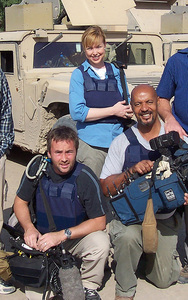Feet first: Diabetics need to keep toes under wraps during summerJane Oppermann
Just when we think it's OK to kick back and relax, people with diabetes enter their summer season of high alert. Forget the flip-flops, walking
barefoot in the grass or on a sandy beach or even

stretching out in the sun for a snooze. If you're diabetic, you know summer is the time to be safety savvy.
"Diabetics are not entitled to the luxury of walking barefoot in wet grass or walking barefoot anywhere, I'm sorry to say," said Donald J. Arenson, a podiatrist with offices in Elk Grove Village and Elmhurst. "An insect bite that would puncture the foot or stepping on a sharp object can lead to infection that can quickly become out of control."
There's a type 2 diabetes epidemic going on. Type 2 diabetes usually occurs later in life and accounts for about 90 percent to 95 percent of all diagnosed cases of the disease, reported the National Institutes of Health. Nearly 21 percent of people age 60 or over in the U.S. have diabetes. Since 1990, the incidence of diabetes has increased by 5 percent each year, fueled by growing obesity, the Centers for Disease Control and Prevention reported at the American Diabetes Association's annual meeting last month in Chicago.
Nearly 60 percent of people with diabetes have neuropathy, or nerve damage to their feet, causing numbness or inability to feel pain. That means that many foot problems go undetected.
A sunburn, irritation from shells in the surf, a too-hot hot tub and even a pedicure can cause foot injuries that can lead to big problems.
"We remind our diabetic patients that they are cerebrally disconnected from their feet," Arenson said. "You have to substitute your other senses, namely your eyes and the eyes of your family. You have to inspect your feet every day."
Arenson tells of one patient, an attorney, who lost his law school class ring. The attorney was unaware the ring had fallen into his shoe until that night when he took his shoes off and found the ring had worn a hole in his foot.
Foot ulcers are the number one cause of most diabetic hospitalizations. Other diabetes-related foot and leg problems include conditions that everyone else battles: corns and calluses; dry, cracked skin; nail disorders; hammertoes and bunions; brittle bones; and blocked arteries in the calf.
But here's the rub - poor circulation and reduced blood flow make infections harder to fight and heal. The rate of amputation for people with diabetes is 10 times higher than for people without the disease.
With proper care, diabetic's feet can last a lifetime. Doctors say that nearly 50 percent of amputations might have been prevented with daily foot checks.
"We tell our patients they must treat their feet like fine china," Arenson said. "Doing a daily foot check has got to be almost a religion."
That means inspecting your feet carefully every day, looking for areas of redness, swelling or cracks. Check between your toes. Check socks for blood or fluid stains. Wash your feet daily in warm, not hot, soapy water. Moisturize the soles of the feet with unscented lotion immediately after bathing (scented lotions contain alcohol and can cause dryness.) Check shoes to make sure nothing is hiding in there. If your feet are cold, don't use a hot water bottle or heating pad to warm them - wear socks instead.
Remember, in hot weather, remain on high alert: Don't wear sandals or flip-flops and never, ever go barefoot. It's one way to save your feet and stay a step ahead of this disease.












